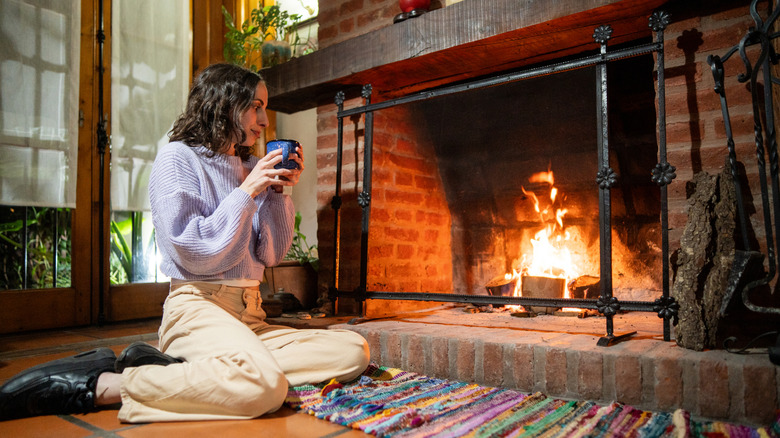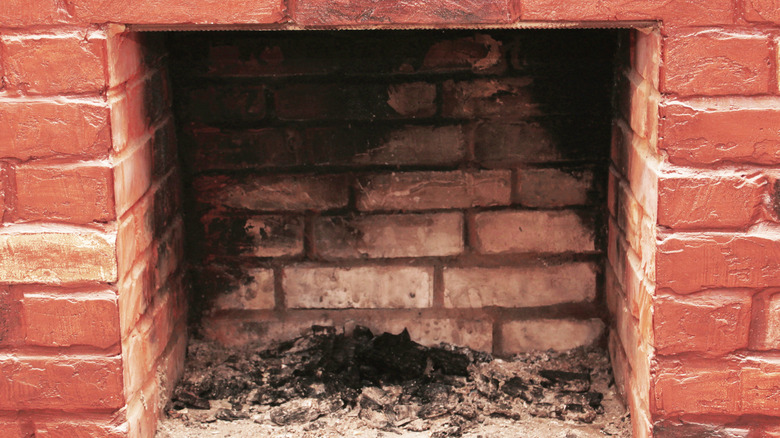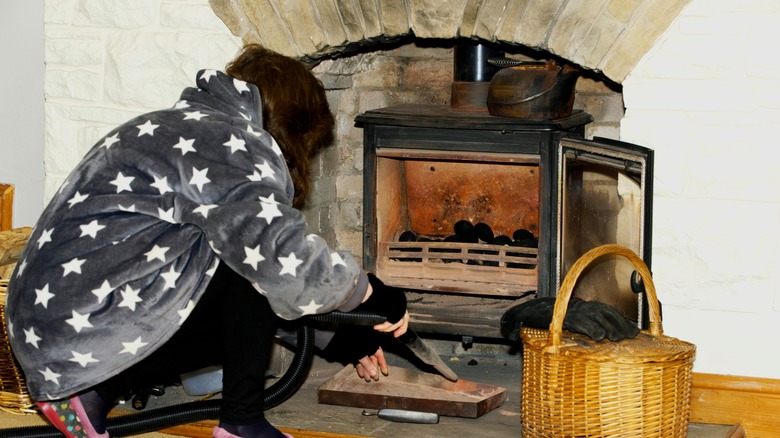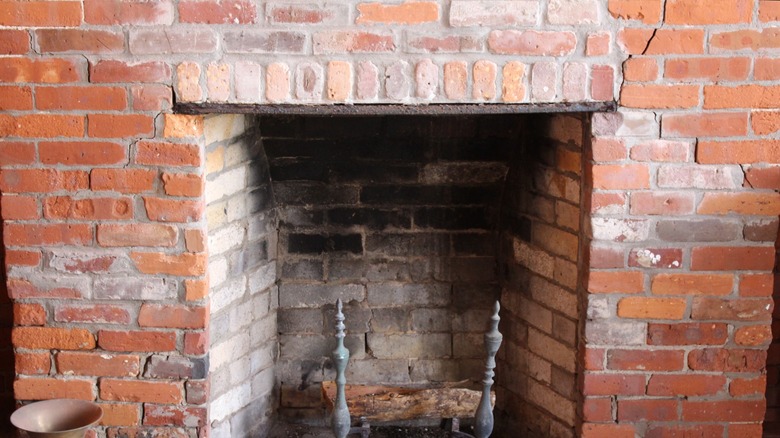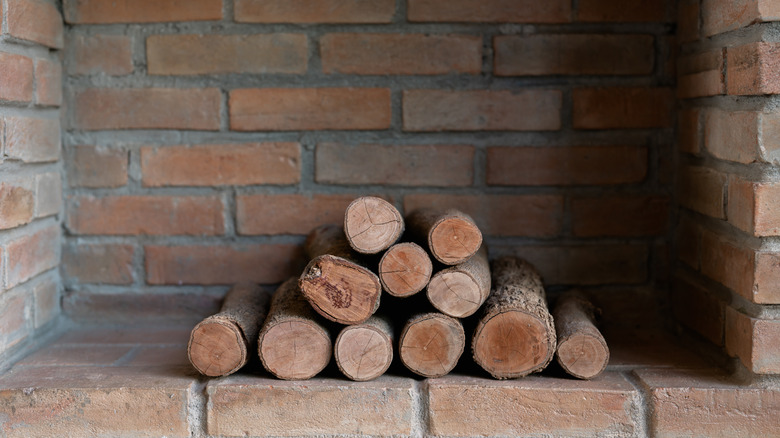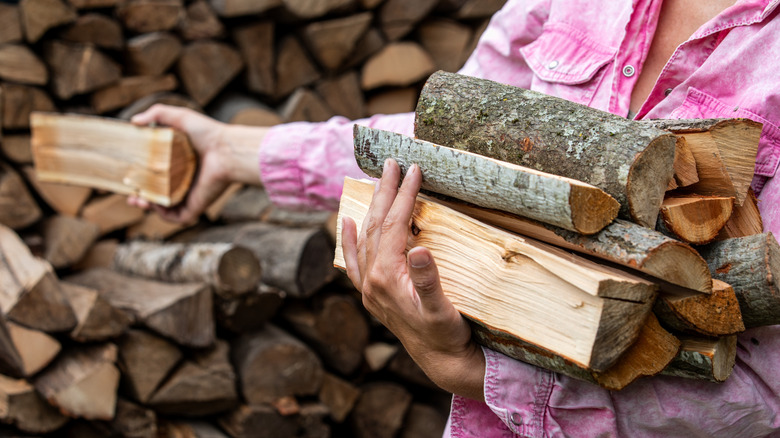7 Tips That Keep Your Brick Fireplace Clean For Longer During The Fall & Winter
If you have a brick, wood-burning fireplace in your home — congrats, you won the cozy lottery. But with great power comes great responsibility, as there are some hidden downsides to having a traditional fireplace, one of which is the maintenance required to keep your fireplace clean for both aesthetic and safety purposes. While this is an easier task in the warmer months, come winter, you will probably find yourself using it with a bit more frequency, which can lead to a dirty fireplace (a real pain in the ash, if you will). This can be particularly tricky with more porous materials, like brick, since they are subject to catching and holding on to dirt and debris.
And it's not just the inside of the fireplace that you have to worry about. Without proper precautions, you could end up with a mess spreading into your living area. This can not only be a pain to clean, but in worst-case scenarios, a fire hazard. The good news is that there are plenty of tips and tricks (like vacuuming regularly and using dried wood) to help you keep your brick fireplace as clean as possible without having to forgo a daily burn or replace the real deal with something more synthetic. Though if you aren't excited about the work that goes into a wood-burning fireplace, switching to a gas fireplace might be a better move for you.
Give it a proper deep clean
Deep cleaning the sides of your fireplace a couple of times a year can help prevent buildup from getting too out of hand. A mixture of equal parts warm water and white vinegar is a simple but effective solution for your deep cleans. Simply use a sponge or bristle brush in circular motions to remove the soot, and wipe away with a clean rag. Though be cautious not to scrub too aggressively, as you don't want to risk eroding the brick.
Vacuum regularly
One of the most effective ways to maintain a clean fireplace is with regular vacuuming. After every use, wait for the ash to cool completely, and then give it a quick vacuum to prepare it for your next use. This will make your fireplace safer, plus exposed brick also helps the heat radiate more effectively into the room, leaving you feeling warmer.
Use a fireplace screen
While the main objective of fireplace screens is to keep the fire and detritus contained, they add a decorative visual element as well. There are screens available in all sizes and styles, so if you have a more minimalist or modern home, you don't have to settle for something that looks like it has been plucked out of the 1800s. If you need a bit of inspiration, check out these unique fireplace screen ideas to take your space from drab to fab.
Check for cracks and damage
If you want to keep your fireplace easy to clean, you will also want to make sure that you are taking preventive measures to avoid serious damage. Many big, expensive problems often start as small cracks, so finding them early on can help you repair them while they are still minor issues. If you are dealing with a hairline crack, you can usually get away with caulking it yourself. However, if it has progressed to anything larger, you are going to want to call in a professional to repair it .
Use dried wood
To prevent build-up on your brick fireplace, always use wood that is fully dried. The issue with moist wood is that it creates excess smoke as well as creosote buildup, which is not only problematic in that it causes bricks to look dirty and dingy, but it can also be a hazard as it is flammable. Not to mention, it burns less efficiently, so you will be forced to use more wood for less heat.
Follow the top-down method
The idea behind the top-down method is to place your largest logs on the bottom and work your way up to your smallest sticks and kindling. Then, light the fire from the top rather than from the bottom. This lighting technique is incredibly beneficial when the goal is to have a low-smoke, heat-efficient fire with less mess.
Don't burn just anything
Beware of softer woods like pine, spruce, and poplar, as these can produce a lot of creosote, smoke, and ash, and some (like poplar) just have an unpleasant smell. You will also want to be wary of any treated or painted wood. For one, it is unpredictable as far as burning goes, and secondly, you are risking the release of unknown toxins and chemicals into the air, which can cause serious health issues for both humans and pets.
